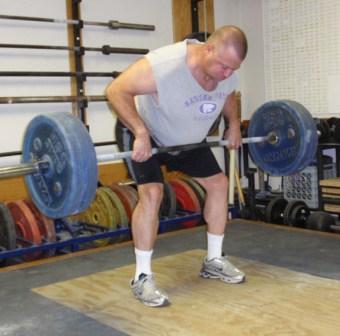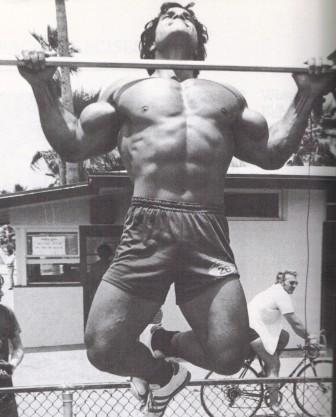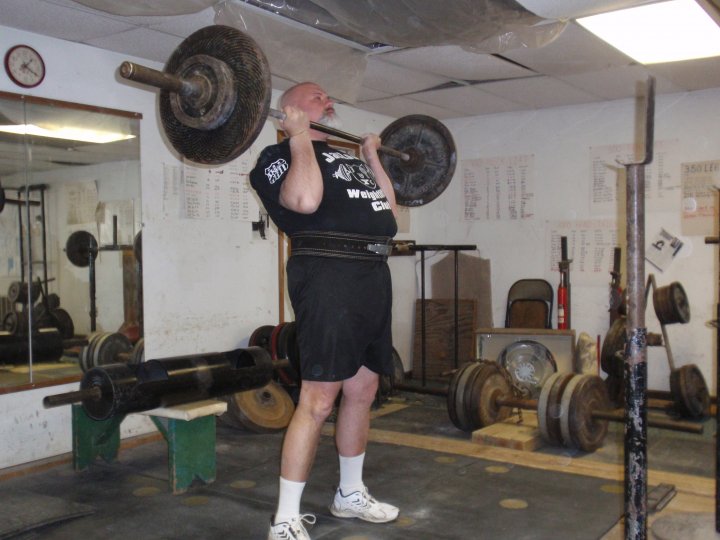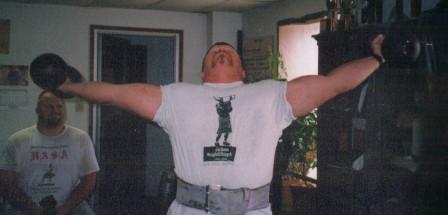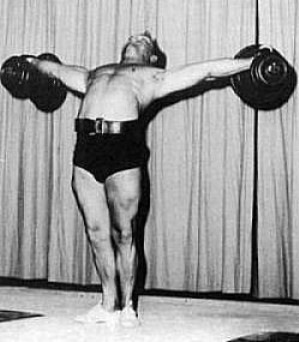New Lift – Bent Over Row
by Al Myers
Another new lift that was approved at the 2010 National Meeting by the membership was the Bent Over Row. This lift was proposed by John McKean of the Ambridge VFW Barbell Club. The Bent Over Row is an ole’ fashioned training exercise that has been part of training programs for years – but NOW is an official USAWA lift so it can now be done in competition and contested for records. I was glad to see John propose rules for it that are consistent with how the lift is usually done in training. The Bent Over Row is a tremendous upper back exercise. John had this to say about the Bent Over Row when he proposed it as a lift to the USAWA, “This lift uses a combination of legs, hips and back. It is a true all-round movement! This is an absolutely GREAT exercise certainly deserving its due as a very heavy weight, total body, competition lift.”
We do not have a lift even similar to the Bent Over Row in our extensive list of Official Lifts. I like to see lifts like this get approved – lifts which are basic movements and not just some “trick lift”, “gimmick lift”, or a lift with a slight deviation of another official lift (which isn’t really anything new).
The Rules for the Bent Over Row
The lift will start at the lifter’s discretion with the bar placed on the platform in front of the lifter. The lifter will grip the bar with an overhand grip with the palms of the hands facing the lifter. The width of grip spacing and feet placement is of the lifter’s choosing, but the feet must be in line with the bar. The body must be in a bent over position at the waist. The upper body must not straighten past 45 degrees parallel to the platform at any time during the lift or it is a disqualification. The legs may be bent during the lift and upon the completion of the lift. The bar is lifted to touch the abdomen or torso by bending the arms. The bar must touch the abdomen higher than the belt, or the navel if a belt is not worn. It is a disqualification if the belt supports the bar at the abdomen upon the finish of the lift. The lift ends by an official’s command when the bar is held motionless at the abdomen or chest.
I will definitely be doing the Bent Over Row at the Ledaig Record Day this weekend, and hope to be the FIRST one to set an official USAWA Record with it. The Bent Over Row will be included in the updated USAWA Rulebook which will be available the first of August.
